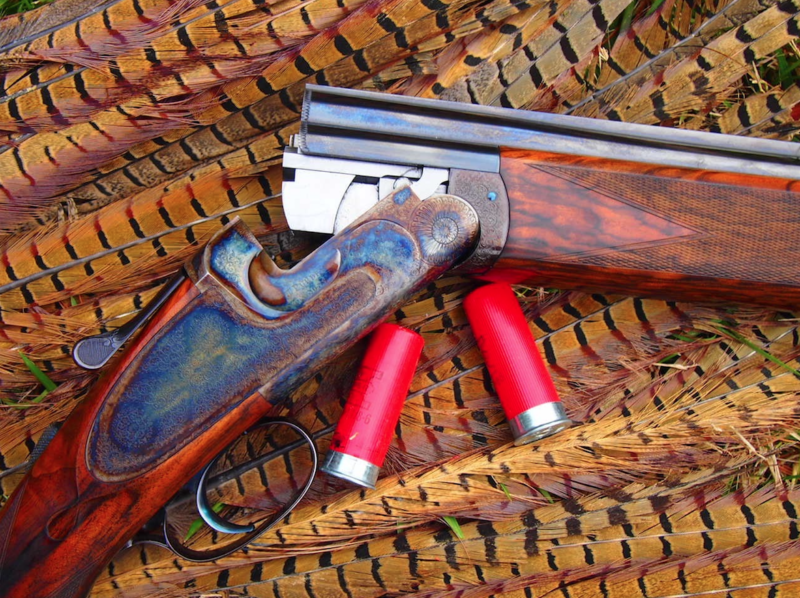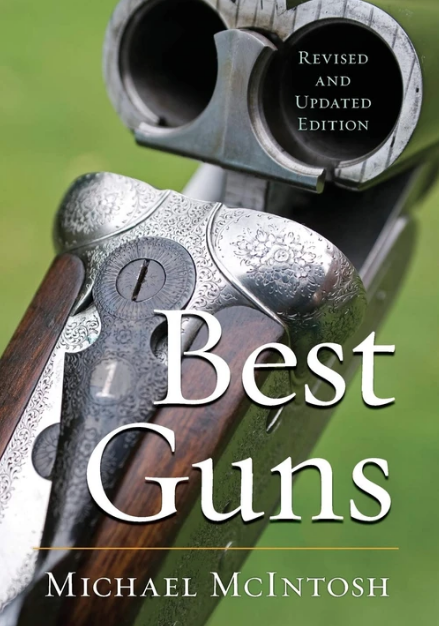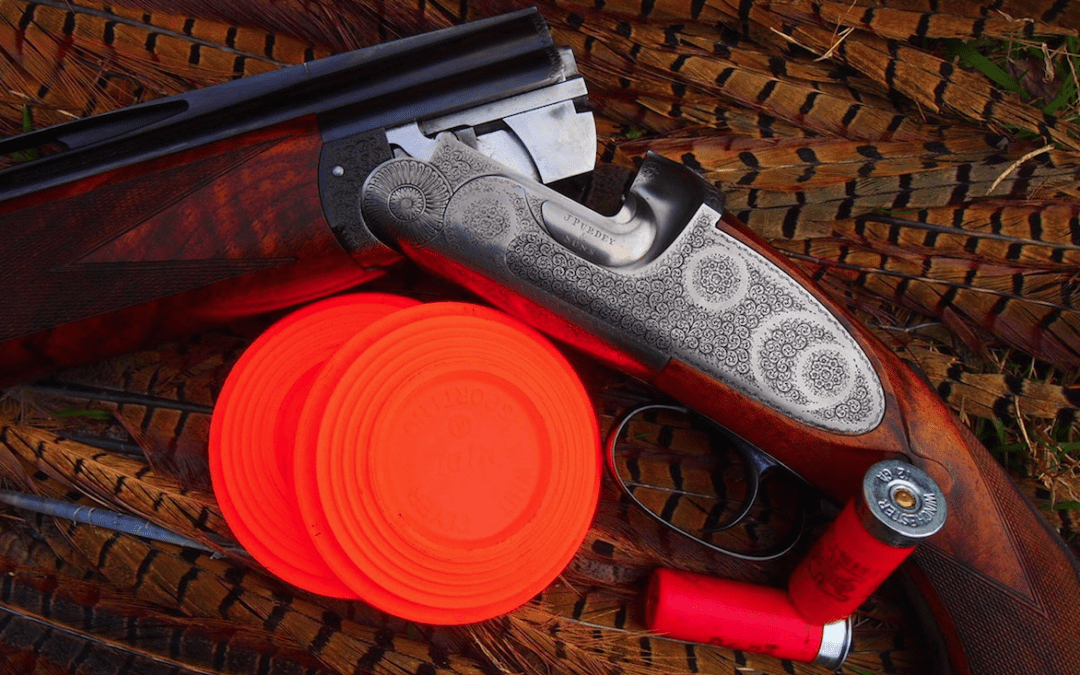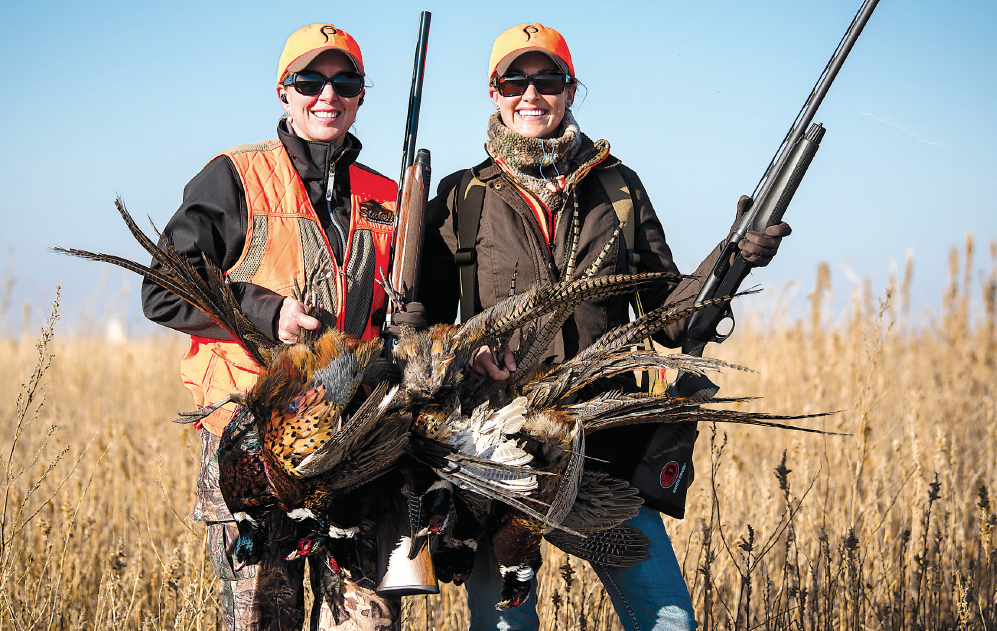The guns that really caught my eye were the new trigger-plate over/unders. Despite a personal predilection for side-by-sides, these guns are something special!
Given the liberty of a wholly unsolicited opinion, I’d surely opine that almost everybody who likes shotguns likes a nice one. I’m certainly that way. Given the opportunity, I’ll use the nicest one that I can get my hands on. And though I’m not much of a clays shooter, I’d guess that most folks who commit trap and skeet and sporting clays feel the same way in their heart of hearts. It’s only natural.
Who do you know who prefers an ugly, unruly dog to a good-looking, classy English setter that’s well trained and mannerly? Personally, I’m going for the class act every time. And I’d bet a considerable sum that, if the truth be told, you feel the same way. Like I said, it’s just human nature.
Likewise, among those particularly well-heeled, who would give up his new Bentley for a scarred and rusty ’57 Volkswagen? And even though my socio-economic standing doesn’t put me in that class of consumer, I do dearly love to “window shop” a little. That’s human nature, too!
I recently did a little window-shopping of my own at Primland, the Blue Ridge Mountain resort outside of Meadows of Dan, Virginia. George Juer and Simon Rood from Purdey were there at their annual event, showing off the legendary English maker’s wares. The event included pheasant shooting—both driven and walk-up. It also included some clays shooting for those who cared to indulge. George and Simon had their whole line on display, and available for participants to shoot. They had “best guns” in both side-by-side and over/under configurations and their “Sporter,” which they produce in cooperation with Perugini and Visini. They also were showing off their new over/under “trigger-plate” guns, which represent an evolutionary step from the Sporter, but are made entirely in-house in London.
The guns that really caught my eye were the new trigger-plate over/unders. Despite a personal predilection for side-by-sides, these guns are something special! Beautiful, practical and durable, they have all the bases covered!
Although the trigger-plate design is fairly new to Purdey, the concept has a spiritual heritage that reaches all the way back to the Scottish trigger-plate guns of McNaughton and David McKay Brown and stretches right through the competition guns of Perazzi and others that also feature removable trigger-groups. It’s a revered and proven design, and Purdey’s version is both practical and immensely strong. In fact, Purdey designed its iteration of the concept with that in mind.

Purdey’s field version was conceived as a gun for driven pheasants, which is a high-volume sport if there ever was one.
The field version was conceived as a gun for driven pheasants, which is a high-volume sport if there ever was one. The clays gun is, in turn an evolution of the field gun, designed to withstand the even higher volume required by sporting clays competitors. The latter was endurance-tested with more than 150,000 rounds with no ill effect. Both feature hand-removable trigger groups for cleaning and maintenance, which is the inevitable consequence of high volume shooting.
The process of evolution from the Sporter to the clays gun was a long one that involved more than two years of research and development. Both of the trigger plate guns incorporate more CNC work than the firms “best quality “guns, allowing for great precision in critical areas. That, in turn, enhances the guns’ durability. In the evolutionary process, the new guns gained pinless side-plates. On the field gun, they’re finished off in Purdey’s traditional “best quality” rose and scroll engraving. They also gained a bit of weight to help deal with recoil. The 12–gauge clays gun comes in at more than 8 pounds. The 20-gauge, of course is a little lighter at 7 pounds 2 ounces. There’s a new 28-gauge on the way, and it will surely be a tad lighter, still. All of the trigger plate guns that I saw featured a new pistol-grip style of stock that was designed by stocker Owen Hastings to minimize felt recoil.
Since the guns are built to order, they will surely be seen in innumerable variations. The clays gun that I saw had a high rib and choke tubes, but extra barrels are available in many different configurations. It may have fixed chokes, or choke tubes may be furnished in flush or extended versions at the client’s option. Porting is available as well. Triggers may be selective or non-selective, also at the customer’s option.
I tried both guns on sporting clays as well as on high driven birds that flushed over the standers from lofty ridge tops. I liked them both for both applications. The extra weight helped to dampen the recoil of multiple shots, and also gave a rock-solid carry-through on passing birds whether of the clay variety or feathered. While I really didn’t have a favorite for either type of shooting, I suppose that a “real” clay bird competitor would favor the tricked-out clays version with a high rib and his preference in choke tubes.
What surprised me was how much I liked the two trigger-plate guns for walk-up shooting. On the last morning, mother nature was winding herself up for a real hissy fit of a storm. The temperature was dropping quickly, and the sky was spitting glass-hard shards of sleet and tiny, wind driven snowflakes. We hunted the brushy edges of recently harvested milo fields surrounded by hillside covers that swallowed the birds instantly when they made the tree line.
The borders of the fields were simply choked with big, flashy roosters that had escaped the lines of shooters the day before. They held nicely for the pointers, but once flushed, they’d climb to about eye-level, catch the wind, and be gone in less time than it takes to tell about it. Most of our shots were real screamers, either hard, low, going-away shots or “pedal-to-the-metal” passing shots, as the big birds turned downwind and scrambled for safety. The big Purdeys were truly in their element, though, and really tumbled them. In that way, they both reminded me of the old side-by-side Purdey pigeon gun that I used to use for the same purpose.
You have to remember that these guns are no sissies! They’re “honest-to-God,” man-sized guns meant for work and lots of it! And the fact that they’re absolutely “drop-dead-gorgeous” doesn’t hurt a thing!
 This is Michael McIntosh’s classic book on fine shotguns, in a fully revised and expanded form–covering gunmakers who have become prominent since the first edition was published in 1989 and McIntosh’s continued research into the nature of the shotgun and the people who make them.
This is Michael McIntosh’s classic book on fine shotguns, in a fully revised and expanded form–covering gunmakers who have become prominent since the first edition was published in 1989 and McIntosh’s continued research into the nature of the shotgun and the people who make them.
McIntosh divides his nearly encyclopedic gathering of gun knowledge into two distinct sections. The first is devoted to the best shotguns ever made in America, “American Best,” looks at each of the finest guns made in the United States during the Golden Age of gunmaking. Names from the past such as Parker, A. H. Fox, L. C. Smith, Ithaca, Lefever, and others are treated in greater detail, including newly manufactured American classics that bear those same names.
In the second section, McIntosh explores the revivified world of gunmaking abroad–in England, Spain, Italy, and elsewhere, places where traditional craftsmanship and modern technology have combined to make the turn of the twenty-first century the most vibrant and exciting period in fine gunmaking in nearly a hundred years.
McIntosh offers practical advice on buying, shooting, and collecting older guns–what to look for and what to look out for, all based on long experience. McIntosh also offers advice on buying and shooting older guns–what to look for and what to look out for, all based on long experience. Buy Now




